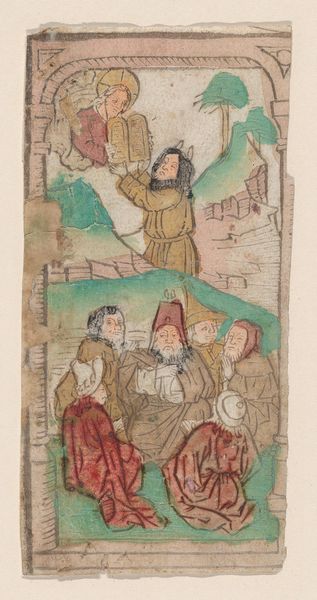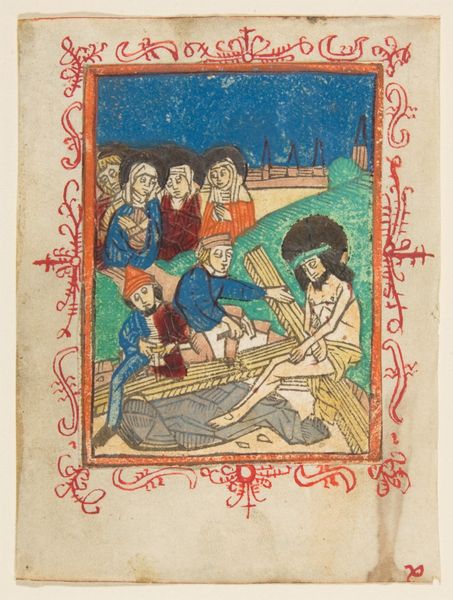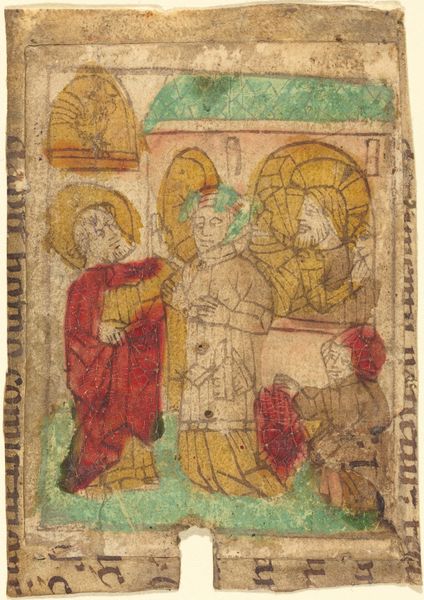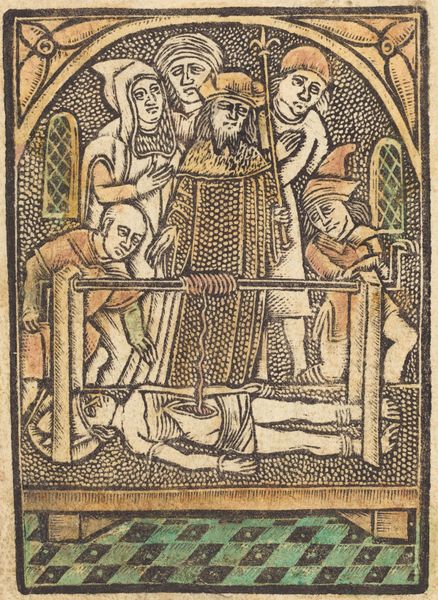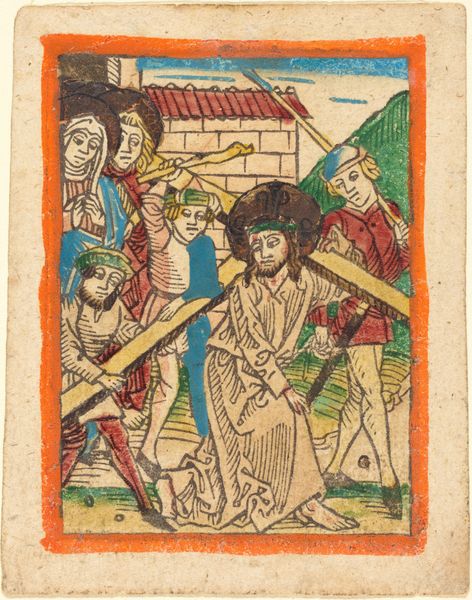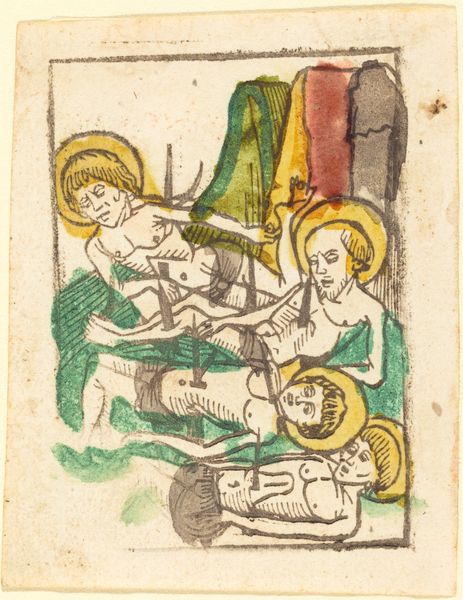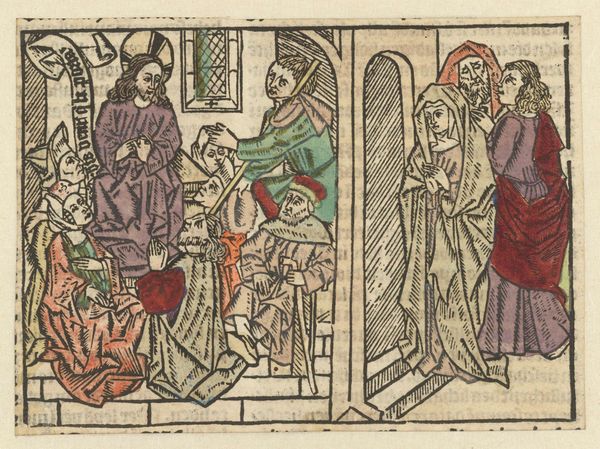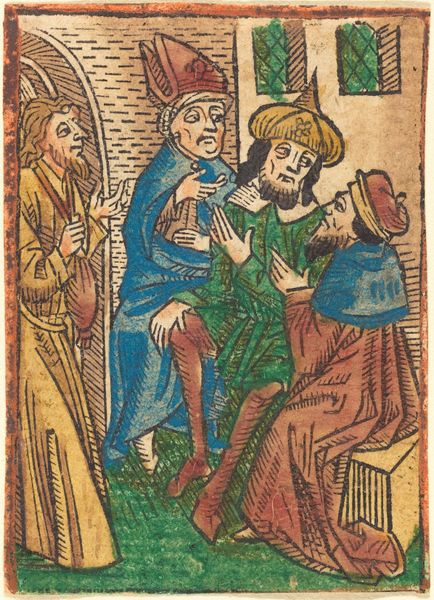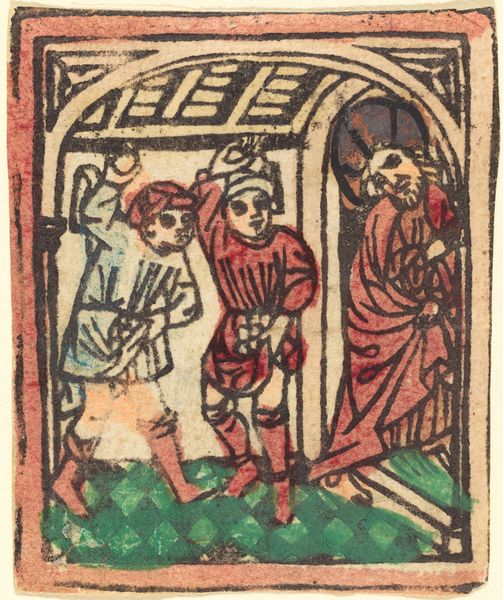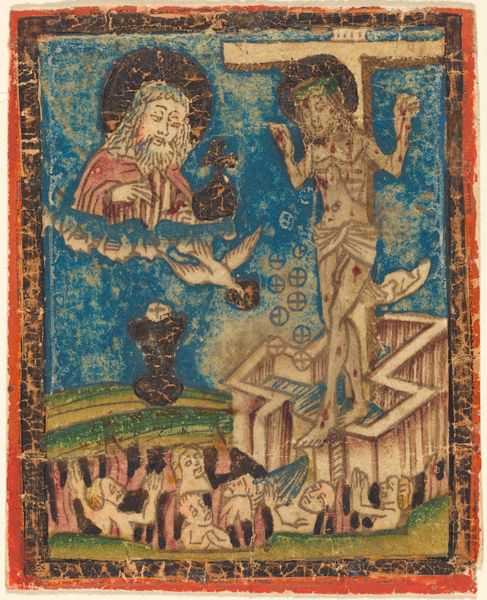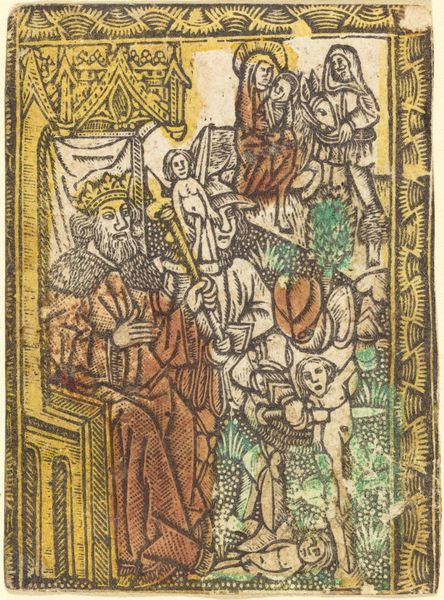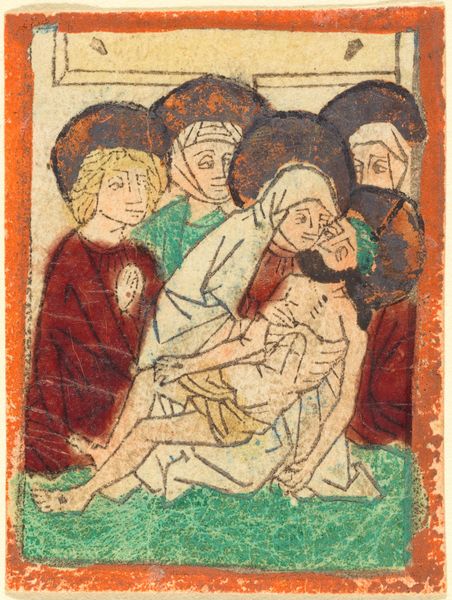
drawing, print, paper, watercolor
#
drawing
#
medieval
# print
#
figuration
#
paper
#
watercolor
#
coloured pencil
#
watercolour illustration
#
history-painting
#
watercolor
Copyright: National Gallery of Art: CC0 1.0
Editor: Here we have a drawing from around 1470 called "The Preparation for the Crucifixion" by an anonymous artist. It's watercolor and ink on paper. I am immediately struck by the raw emotion on the faces of the figures surrounding Christ; they feel very vulnerable, almost innocent. What is your interpretation of this work? Curator: The rawness you've noticed points to a deeper narrative about power and social control in the late medieval period. The graphic depiction of Christ’s suffering isn't just a religious statement; it is a pointed reflection of the brutal realities faced by the powerless. Who are the agents of the suffering depicted here, and what social forces might they represent? Editor: I guess you could say the figures enacting the crucifixion represent institutions that perpetuate oppression. Their faces are hardened, seemingly indifferent to the suffering they inflict. Curator: Exactly! Consider how art serves as a platform for voicing the injustices of society. Here, it encourages the viewer to engage with questions of institutional violence. Does seeing this level of vulnerability shift our understanding of not only the religious story but broader social inequalities? Editor: I think it does. Seeing the work framed as a representation of historical injustices gives it a new dimension, moving beyond a strictly religious interpretation. I’d never really thought about this topic through this lens. Curator: These pieces force us to ask: Whose stories are told and whose are erased or exploited? This artwork becomes a space for questioning and resisting dominant power structures, even today. Editor: I'm now thinking about the visual language, like the vulnerability of the figures, which feels like a very direct appeal to our empathy and makes me want to know more about these stories of the historically marginalized. Curator: Exactly, it provides a focal point to actively engage with our shared past and understand current realities more critically.
Comments
No comments
Be the first to comment and join the conversation on the ultimate creative platform.
